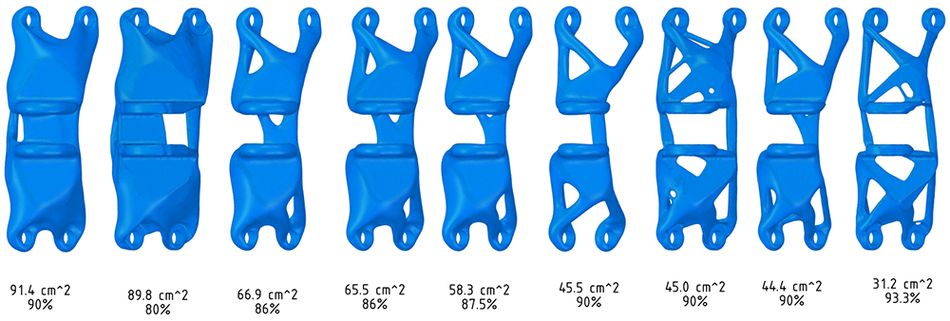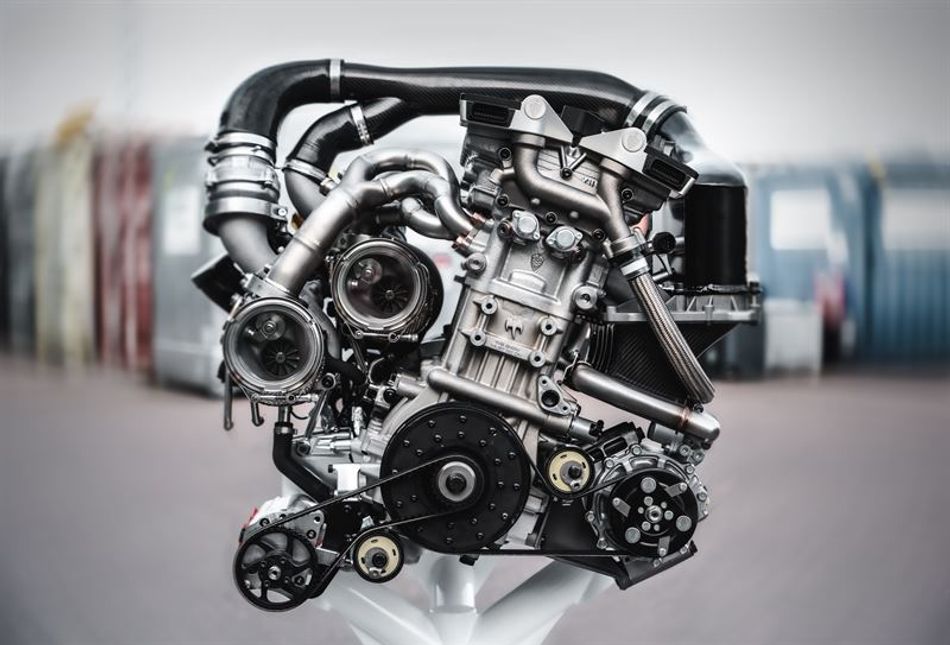Decarbonization, Sustainability, and Innovations in Transportation and Mobility
The guide to the technologies that can lower the environmental footprint of transport.

Image: Lightyear
The 2° C challenge
Climate change is one of the biggest challenges we face. Our task is to minimize the damage by limiting global warming to 2 degrees or less.
Transforming transportation will be key. Transport emissions accounted for over 24% of global CO2 emissions[1] in 2016. Furthermore, global emissions from transport in urban areas are expected to more than double[2] by 2025 despite more fuel-efficient vehicles and an increase in electric and hybrid cars on the roads.
Together with Ansys, a developer of simulation software, we are creating a series of content about the technologies that make sustainable transportation possible.
This guide will outline the major technologies that can help to lower the environmental footprint of transport. In future articles we will zoom in on the true carbon footprint of electric cars, the role smart cities will play in green transport futures, and how autonomous vehicle simulation can exponentially advance the industry.
This article was based on a whitepaper by Tarun Tejpal, the Global Director for Transportation and Mobility at Ansys with significant editing and additions by Wevolver and science & technology journalist Sandrine Ceurstemont.
The technologies that hold the key to a rapid reduction in greenhouse gases
Battery technology
- Improving battery technology is key to making electric and plug-in hybrid vehicles more sustainable, where their biggest carbon footprint stems from the materials and processes used during manufacturing.
- Batteries must not only improve so that their range on a single charge is extended but that their overall lifespan is increased.
- Lithium-ion battery range and charging rate continue to improve but switching to solid-state technology could provide a leap in efficiency. Recent results from Quantumscape[3] show that their solid-state battery can be charged up to 80% capacity in just 15 minutes. It could be used to travel hundreds of thousands of miles before it reaches the end of its life. Car battery manufacturers must aim for a battery that could cover a million miles in its lifetime.
- Increased range and lower costs derived from better batteries would change the economics of zero-emissions vehicles in favor of battery electric vehicles ending the need for hybrid electric vehicles or even hydrogen fuel cell vehicles. A million-mile-lasting battery would change the future of transportation and mobility.[4]
3D Printing to reduce weight and carbon footprint of electric vehicles
3D printing in manufacturing will also play a major role in decarbonizing transport in both design applications and optimizing the supply chain. Reducing the weight of vehicles can provide huge benefits in terms of emissions since lighter structures consume less power and have a greater range.
Generative design is a method of designing that uses topology optimization software to put designs through various real-world simulations before offering alternative efficient geometries that use the minimal material needed to achieve the design intent. Combined with 3D printing this design method delivers parts that are stronger and more durable. Complex shapes can be produced more simply and quickly and often require fewer joints and assembly. The process also often produces less waste than traditional manufacturing processes such as CNC.
Instead of suppliers sending an OEM a huge inventory of manufactured parts, the suppliers send a file of the 3D part that the OEM can use to manufacture parts locally. With complete vertical integration of design, production, and distribution, OEMs can reduce the reliance on global supply chains. When one considers that a fifth of all carbon emissions come from supply chains[5], we can see the impact that mass adoption of 3D Printing can have on sustainability and decarbonization.
Digital Twins
Digital Twin technology is another important tool. Producing a digital representation of a vehicle or one of its parts can allow for simulations of its performance so that weaknesses and limitations can be identified prior to manufacturing.
The difference between Digital Twins and conventional simulations is the addition of real-world data is into the virtual model. This real-time monitoring feeds into simulations, validates the system, and makes adjustments dynamically. A design can therefore be quickly improved, accelerating the time it takes for a new innovation to come to market.
- Using a digital twin allows for exponential innovation. Several design options can be explored at the same time, where the physics of each digital twin can be simulated and optimized. Designers can therefore come up with an optimal design based on fewer iterations, speeding up the process exponentially. The quality and utility of the end product should also be improved.
- A digital twin can help explore how best to join together different components of a vehicle, for example. This can include which technology to use to attach parts or even how a tool should be oriented to complete the task. Techniques such as laser welding are highly accurate so simulating the process beforehand can help make it a success and avoid resources being wasted.
Technologies that increase ICE efficiency until they phase-out
Many governments are setting targets[6] for the phasing out of traditional fossil fuel vehicles by 2030 and onwards. However, reducing their emissions by increasing their efficiency is important in the meantime, several innovations will enable this to happen.
Synthetic fuels
Using synthetic fuels could be an immediate way to reduce emissions in conventional cars since they are carbon neutral. They can be substituted directly for fossil fuels since they have a similar energy density and will work with existing engine technology. One type, called Efuels, can be produced through a chemical reaction between carbon dioxide, which can be extracted from the air using carbon capture technology, and hydrogen, a green fuel. The second type is a synthetic biofuel created from biomass such as forestry waste using chemical or thermal processes.
However, there are still hurdles to overcome before they become widely used. They are currently much more expensive due to production costs, for example. In addition, energy is required for the processes used to create them so renewable sources must be used for them to be carbon neutral.
If the production process can be improved, synthetic fuels will become a more viable option. New ways of producing large quantities of hydrogen at low cost are needed as well as a better understanding of catalysis, one of the processes involved.[7]
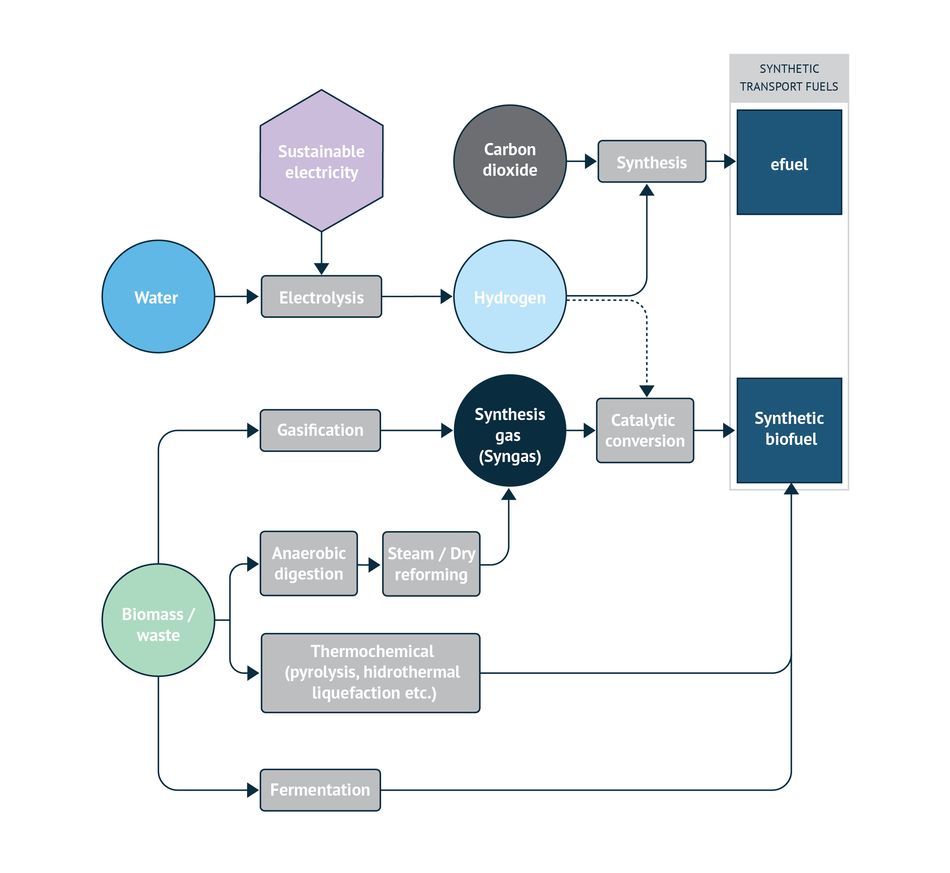
Engine technology
Modifying different engine components is also promising. Variable valve timing systems, for example, can reduce fuel consumption and allow cars to run on biofuels. Christian von Koenigsegg, the CEO of Swedish car manufacturer Koenigsegg Automotive, created an engine where camshafts were replaced with electromechanical actuators. This allows individual valve timing to be controlled, and each one to be held open as little or as much as needed, for example. When this technology was applied to a Qoros engine[8], there was a 45% increase in power, and fuel consumption was reduced by 15%.
Variable compression ratio technology is a recent innovation that can also help improve fuel efficiency and reduce emissions. It allows the engine compression ratio to be changed depending on the performance required instead of having a set compression ratio. Infiniti, the luxury vehicle division of Nissan, created the first engine capable of this after 20 years of research. A high compression ratio is desirable for high power and efficiency. However, if it is too high it causes the engine to knock, where air mixed with fuel burns unevenly in an engine’s cylinders and can cause severe damage. Infiniti’s variable compression ratio system was able to get around this issue while allowing the engine to operate at a high compression ratio. It also made the engine up to 35% more fuel-efficient.
Weight reduction
According to the European Commission[9], reducing a car's weight by 100 kg leads to lower CO2 emissions of 7.6 g/km 2. Innovation that reduces weight across all elements of vehicles is an essential and straightforward approach to increasing their efficiency. A 10% reduction in vehicle weight can result in a 6%-8% fuel economy improvement. Material selection is a key factor and alternative lighter and more sustainable materials must be considered across the full car design.
Replacing traditional steel components with lightweight materials such as high-strength steel, magnesium alloys, aluminum alloys, carbon fiber, and polymer composites can reduce the weight of a vehicle's body and chassis by up to 50 percent and therefore reduce a vehicle's fuel consumption.[10]
As all vehicles increasingly electrify, attention must be paid to the wiring harnesses which are the third heaviest and third costliest component in a typical home-owned vehicle, behind the chassis and the engine. Wiring normally accounts for 60- 70%[10] of the total weight of an automotive wiring system, which translates to 35-42 kg per vehicle. This can rise to as much as 60 kg for some luxury car models and may be set to increase as electrification rises. Replacing some or all of the copper in an automotive wiring system could reduce the total automotive harness weight by approximately 10-20%.[11]
3D printing can be engaged to manufacture lightweight pistons that can cool down more effectively, which can increase the power and efficiency of engines in conventional vehicles. Porsche has used this approach to reduce the weight of some of their pistons by 10%. They were also able to integrate a cooling duct in part of the piston which couldn’t have been done otherwise. Engine speed was increased, there less temperature load on the pistons, and combustion was improved.
In a collaboration with Mahle and Trumpf, Porsche also achieved a breakthrough by creating aluminum pistons using 3D printing for the first time.[12] It is thought that engine power could be boosted by using these pistons, accompanied by an increase in efficiency. The performance potential of forged pistons, which are currently used, has already been maximized.
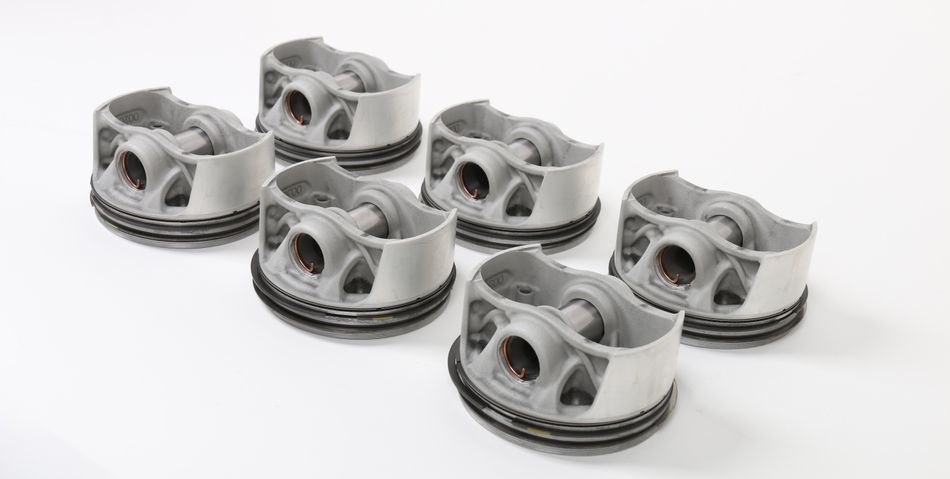 The bionic-design pistons produced by MAHLE using 3D printing that operate under the bonnet of the Porsche 911 GT2 RS. Image Credit: Mahle.
The bionic-design pistons produced by MAHLE using 3D printing that operate under the bonnet of the Porsche 911 GT2 RS. Image Credit: Mahle. How simulation is a key tool for sustainability-focused innovation

How simulation is a key tool for sustainability-focused innovation
Simulation will be key to developing innovations focused on sustainability. From the initial idea to the design, manufacturing, and operation of a vehicle, simulation software can be used to predict how the finished product will behave in the real world. Simulation enables experimentation on a valid digital representation of a system. Unlike physical modeling, such as making a scale copy of a vehicle or part of a vehicle, simulation modeling uses algorithms and equations to test for multiple conditions in parallel. State of the art software can simulate and analyze elements like aerodynamics, material characteristics, shape strength, electronic circuit reliability, and more.
Traditional vehicle development requires nearly 8 billion miles of road testing and safety engineering to ensure delivery of safe, reliable, durable, high-quality products at scale and at lower cost. And for autonomous vehicles the necessary amounts of road testing are even higher. Linear innovation processes cannot deliver the future of transportation and mobility. Simulation allows designers to exponentially innovate. Compounding improvements between each design and optimization cycle means designers execute rapid feedback loops on fewer iterations to converge on the optimal design faster and deliver exponential innovation.
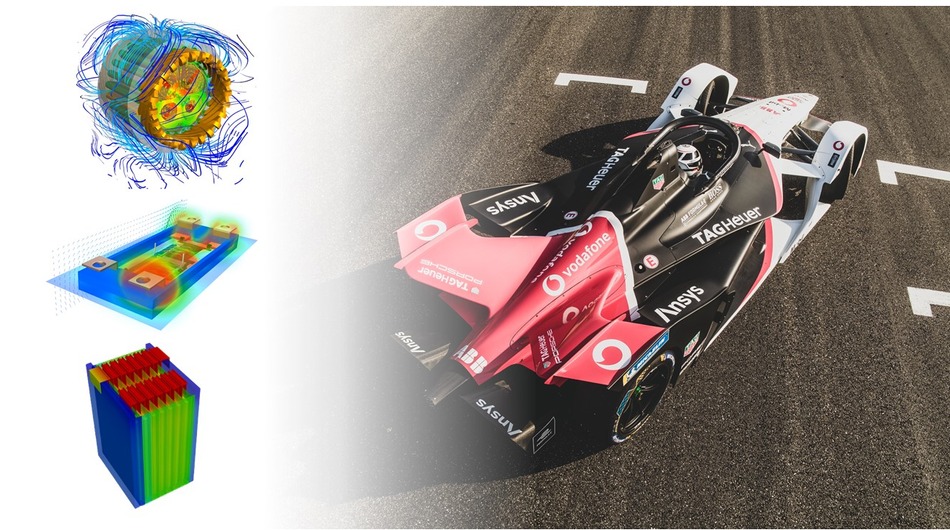
Using simulations has been shown to reduce the development time required to bring a car to market by 50%. It is also linked to a 12% improvement in energy efficiency and power density, boosting the environmental impact of electric vehicles. For example, simulation is a useful tool for developing the electric systems and power train in electric vehicles. It can help increase the power density and lifetime of power electronics while optimizing the electrochemistry of the battery and ensuring the safety of the system.
Using multiphysics simulation technology, Volkswagen was able to design an electric car in just nine months that was able to break the speed record for electric vehicles. To achieve this feat, they focused on the battery pack design. It needed to be able to store enough energy to reach top speed while also making sure it didn’t run out of power at the end of the race. There was also limited space in the car, so it needed to be compact and fit into the space available in the chassis. Charging efficiency was crucial too since if a race was interrupted again for some reason, the cars would have to be ready to roll again in 20 minutes.
A six-step simulation process helped Volkswagen’s engineering team achieve their goal. The first step was modeling the circuit of a single battery cell. Then, battery cells were combined to form a module, and computational thermodynamics was used to simulate the thermal properties. Simulations were also carried out to see how the full 10-module battery pack would be able to power the electric car and have enough charge to finish the race without surpassing peak temperature. Using a virtual approach to solve these challenges significantly sped up the process.
Summary
Reducing emissions and decarbonization will only be achieved through innovation in the technology areas outlined above: Battery technology, 3D printing, Digital Twins, and through technologies that increase the efficiency of Internal Combustion Engines as they phase out. Furthermore, for that rapid innovation to occur designers and engineers will use simulation to test and develop at an exponential pace. Read other articles in the series via the Ansys profile.

About the sponsor: Ansys
Ansys provides engineering simulation software used to predict how product designs will behave in real-world environments. Founded in 1970, Ansys employs more than 4,400 professionals, many of whom are expert M.S. and Ph.D.-level engineers in finite element analysis, computational fluid dynamics, electronics, semiconductors, embedded software, and design optimization.
References
1. Bloomberg NEF – Electric Vehicle Outlook, 2019.
2. Sims R., et al, 2014: Transport. In: Climate Change 2014: Mitigation of Climate Change. Contribution of Working Group III to the Fifth Assessment Report of the Intergovernmental Panel on Climate Change. Cambridge University Press, Cambridge, United Kingdom and New York, NY, USA.
3. Hanley S. QuantumScape Releases Performance Data On Its Solid-State Battery Technology [Internet]. CleanTechnica. 2020 [cited 1 April 2021]. Available from:
4. Tejpal T. Decarbonization, Sustainability and Innovations in Transportation and Mobility. 2021.
5. Zhang, Z., Guan, D., Wang, R. et al. Embodied carbon emissions in the supply chains of multinational enterprises. Nat. Clim. Chang. 10, 1096–1101 (2020).
6. Sandra Wappelhorst S, Cui H. Growing momentum: Global overview of government targets for phasing out sales of new internal combustion engine vehicles | International Council on Clean Transportation. Theicct.org. 2020 [cited 11 November 2020]. Available from:
7. Sustainable synthetic fuels for transport | Royal Society [Internet]. 2019
8. Improved engine performance | Full combustion cycle control [Internet]. Freevalve. 2020
9. Reducing CO2 emissions from passenger cars - before 2020 - Climate Action - European Commission [Internet]. Climate Action - European Commission. 2020 [cited 1 April 2021].
10. Lightweight Materials for Cars and Trucks [Internet]. Energy.gov. 2020 [cited 1 April 2021].
11. Un-Noor F, Padmanaban S, Mihet-Popa L, Mollah M, Hossain E. A Comprehensive Study of Key Electric Vehicle (EV) Components, Technologies, Challenges, Impacts, and Future Direction of Development. Energies. 2017;10(8):1217.
12. Wang C, Papasavvas F. What lies ahead for the automotive harness industry? Wire & Cable Conference 2019; 2019.
13. Porsche. Innovative pistons from a 3D printer for increased power and efficiency. 2020.
